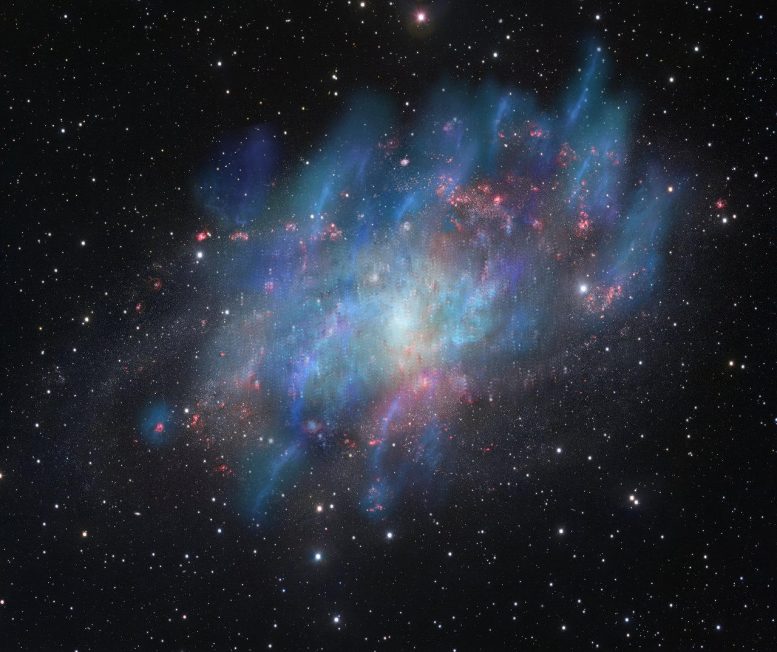
The Study Reveals Cosmic Rays Are Driving Galaxies’ Winds
An important new hint regarding how galaxies halt intense episodes of star formation has been found by astronomers using the Karl G. Jansky Very Large Array (VLA) of the National Science Foundation. Their recent research on the nearby galaxy M33 suggests that fast cosmic ray electrons can generate winds that blow away the gas required for the formation of new stars.
As galaxies evolve over time, these winds are what cause the star formation rate to slow down. However, the primary sources of such winds have been attributed to material jets powered by black holes and shock waves from supernova explosions. Cosmic rays were assumed to be small contributors, especially in galaxies with prolific star formation, such as M33.
“We have seen galactic winds driven by cosmic rays in our own Milky Way and the Andromeda galaxy, which have much weaker rates of star formation, but not before in a galaxy such as M33,” said Fatemah Tabatabaei, of the Institute for Research in Fundamental Sciences in Iran.
M33 is a spiral galaxy that is almost 3 million light-years distant and is a member of the Local Group of galaxies, which also contains the Milky Way. Tabatabaei and an international team of scientists made detailed, multi-wavelength VLA observations of M33. Additionally, they made use of information gathered from earlier observations made with the VLA, the German Effelsberg radio telescope, millimeter-wave, visible-light, and infrared telescopes.
Role of Cosmic Rays in Star Formation Slowdown
Stars much larger than our Sun speed through their life cycles, eventually exploding as supernovae. Cosmic rays are produced when explosive shock waves accelerate particles almost to the speed of light. If there are enough of these cosmic rays, pressure can be created that drives winds that transport away the gas required for star formation.
“The VLA observations indicated that cosmic rays in M33 are escaping the regions where they are born, making them able to drive more extensive winds,” said William Cotton, of the National Radio Astronomy Observatory.
Based on their observations, the astronomers concluded that the numerous supernova explosions and supernova remnants in M33’s giant complexes of prolific star formation made such cosmic ray-driven winds more likely.
“This means that cosmic rays probably are a more general cause of galactic winds, particularly at earlier times in the universe’s history, when star formation was happening at a much higher rate,” Tabatabaei said. She added, “This mechanism thus becomes a more important factor in understanding the evolution of galaxies over time.”
Reference: “Cloud-scale radio surveys of star formation and feedback in Triangulum Galaxy M 33: VLA observations” by F. S. Tabatabaei, W. Cotton, E. Schinnerer, R. Beck, A. Brunthaler, K. M. Menten, J. Braine, E. Corbelli, C. Kramer, J. E. Beckman, J. H. Knapen, R. Paladino, E. Koch, A. Camps Fariña, 25 October 2022, Monthly Notices of the Royal Astronomical Society.
DOI: 10.1093/mnras/stac2514
The study was funded by the National Science Foundation.
The National Radio Astronomy Observatory is a facility of the National Science Foundation, operated under a cooperative agreement by Associated Universities, Inc.
Never miss a breakthrough: Join the SciTechDaily newsletter.